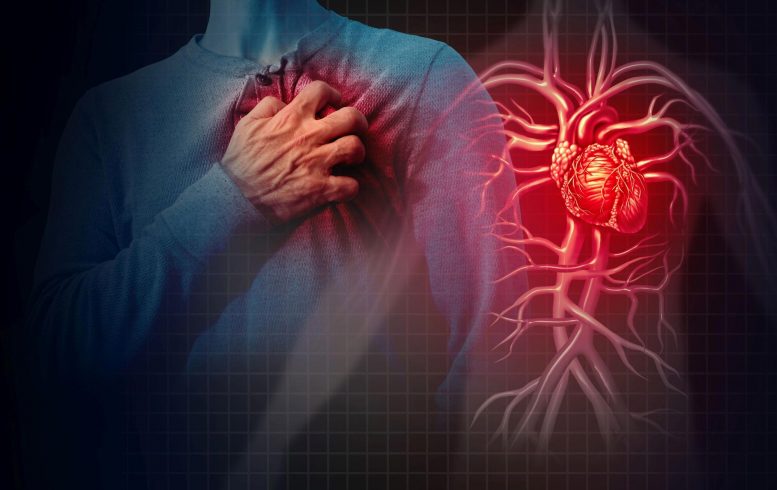Spikes in Cardiovascular Deaths Shown to Be an Indirect Cost of COVID-19 Pandemic

The increase in deaths occurred in states that were hit earliest by the pandemic — with the exception of Massachusetts.
As the number of COVID-19 infections continues to rise nationwide, more than 360,000 Americans have already died from the potentially deadly viral infection. But recent reports describe an increase in mortality during the pandemic that cannot be explained by COVID-19 deaths alone.
In a new study from the Richard A. and Susan F. Smith Center for Outcomes Research in Cardiology at Beth Israel Deaconess Medical Center (BIDMC), researchers analyzed data from the National Center for Health Statistics to compare the rate of cardiovascular-related deaths before and after the onset of the pandemic in the United States, relative to the same periods in the prior year. The observational study, published in the Journal of the American College of Cardiology (JACC), found that cardiovascular deaths unrelated to COVID-19 increased during the pandemic.
“Hospital visits for heart attacks and other cardiac conditions declined markedly during the pandemic, fueling physicians’ concerns that people with acute conditions may be staying at home due to fear of exposure to COVID-19,” said the study’s corresponding author, Rishi K. Wadhera, MD, MPP, MPhil, a cardiologist and researcher at the Smith Center and BIDMC. “Our research raises concern that the avoidance of hospitals, deferral of semi-elective procedures and care, and substantial strain imposed on hospitals during the early phase of the pandemic may have had an indirect toll on patients with cardiovascular disease.”
Wadhera and colleagues evaluated the rate of U.S. deaths due to cardiovascular causes after the onset of the COVID-19 pandemic (mid-March to June, 2020) relative to the immediately preceding 11 weeks pre-pandemic. The team also compared these two periods of 2020 to the same weeks in 2019.
The team found a significant rise in cardiac deaths after the onset of the pandemic in the U.S. Deaths due to ischemic heart diseases (related to narrowing of the arteries) and hypertensive (related to high blood pressure) diseases increased by 11 percent and 17 percent, respectively, compared to the previous year. The rise in deaths was concentrated in areas most affected by COVID-19 this spring. New York State, New Jersey, Michigan and Illinois experienced increases in cardiac deaths, with New York City seeing the largest relative rise in deaths (139 percent) due to ischemic heart diseases. Massachusetts — an epicenter for COVID-19 during the spring — did not see similar increases in cardiac deaths during this time period.
“These data are particularly relevant today, as we find ourselves in the midst of a surge in COVID-19 cases that looks to be exceeding what we experienced last spring,” said senior author Robert Yeh, MD, MBA, Director of the Smith Center for Outcomes Research at BIDMC. “Ensuring that patients with cardiovascular disease continue to receive necessary care during our public health response to the pandemic will be of paramount importance.”
Wadhera, Yeh and colleagues suggest that the strain imposed by COVID-19 on some hospitals may have also led to delays in care for hospitalized patients without COVID-19. The pandemic-related deferral of semi-elective procedures, as well as delays in emergency service response times, have also likely contributed to the increase in deaths. The authors also suggest that a proportion of deaths may have been due to the cardiovascular complications of undiagnosed COVID-19.
“Overall, our data highlight the urgent need to improve public health messaging and rapidly expand health care system resources to ensure that patients with emergent conditions seek and receive medical care — particularly in regions currently experiencing a sharp rise in COVID-19 cases,” Wadhera said.
Reference: 11 January 2021, Journal of American College of Cardiology.
Additional authors included Changyu Shen, PhD, Suhas Gondi, BS, Siyan Chen, MSc, and Dhruv S. Kazi, MD, MS, all of the Richard and Susan Smith Center for Outcomes Research in Cardiology, Division of Cardiology, Beth Israel Deaconess Medical and Harvard Medical School.
This work was funded by grants from the National Heart, Lung, and Blood Institute at the National Institutes of Health (grants K23HL148525-1 and R01HL136708), and the Richard A. and Susan F. Smith Center for Outcomes Research in Cardiology.
Dr. Wadhera and has previously served as a consultant for Regeneron, outside the submitted work. Dr. Yeh has received personal fees from Biosense Webster; and has received grants and personal fees from Abbott Vascular, AstraZeneca, Boston Scientific, and Medtronic, outside the submitted work. All other authors have reported that they have no relationships relevant to the contents of this paper to disclose.
